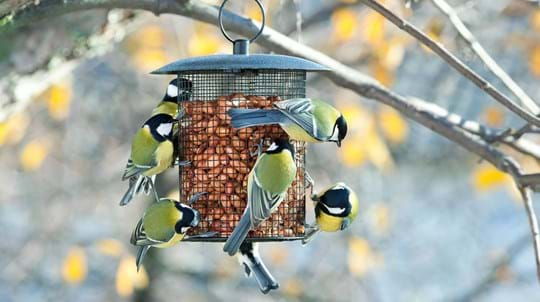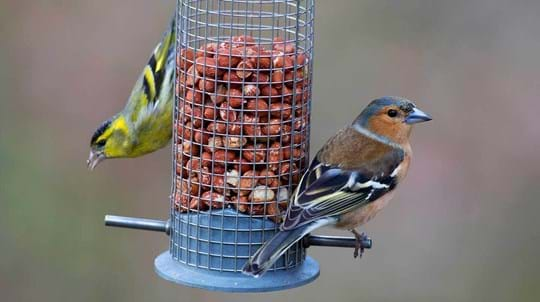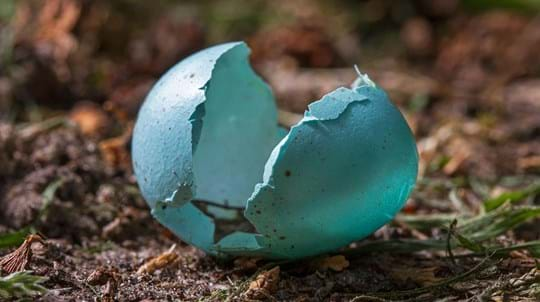
Credit: Stephen Dalton / naturepl.com
What do blue tits eat?
Caterpillars are a favourite for blue tits, but they also eat other insects, spiders, fruit and seeds. They are regular visitors to garden bird feeders, feasting on mixed bird seed, whole shelled peanuts, fat balls and sunflower hearts. Extremely acrobatic, they will often hang upside down from branches to access food. During the winter, blue tits join up with other tit species in search of food.














